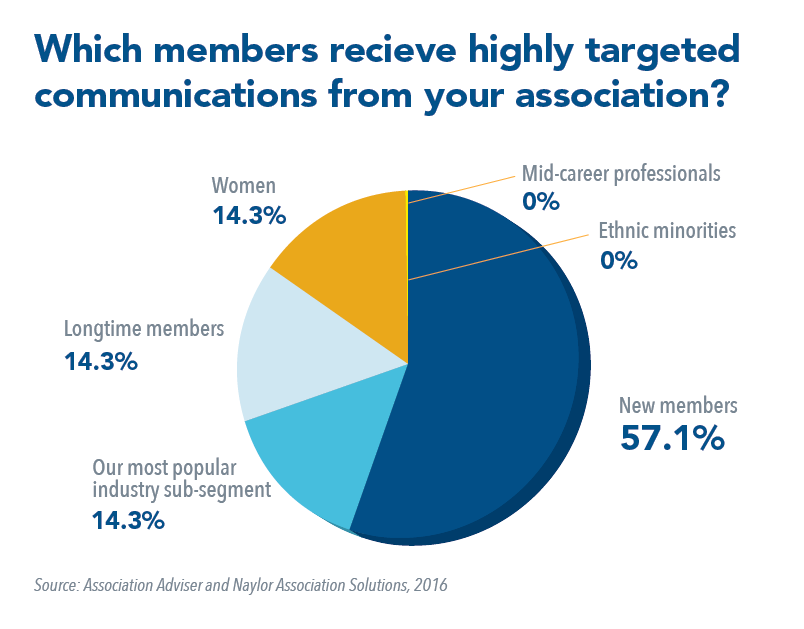Did You Know: New Members Receive the Majority of Targeted Member Communications
Last month, we asked our readers: which members receive highly targeted communications from your association?

New members clearly have the membership and marketing team’s attention. Of our association respondents, just more than 57 percent said they gear specific communications to new members. This should make sense to any membership marketer: once an individual has made the leap into your association, you’re going to need to give them some extra guidance for a while regarding how to benefit the most from their membership, which events to look out for and how to become more involved.
Be careful with the amount of communication you direct at new members, however. In a recent online discussion about email marketing volume, Kevin Whorton of Whorton Marketing & Research noted that “Newer members often notice a ‘hunting license’ phenomena — the day before they joined they never heard from you, now they do constantly. Frequent discount offers for products/services they don’t understand yet is seen as advertising, not a helpful member service. Filtering brand-new members for a period while they ramp up before receiving the full volume can help with early adoption and retention.”
Longtime members and members of prominent industry segments receive the second-largest amount of attention and communication, and with good reason. Longtime members are likely those professionals who thoroughly understand the value of association membership and are ambassadors for your association, so it’s natural for your staff to work harder at keeping them in the loop. Same for prominent industry members. Many are likely to be past board members who want to stay involved even if in a less time-intensive way.
Women also receive a significant portion of targeted communications, says 14.3 percent of respondents. Many associations have women’s committees or roundtables for professional women to gather and discuss workplace or industry issues specific to their gender.
Somewhat surprisingly, none of our respondents said they target special communications to mid-career professionals and ethnic minorities. This could be a sign that these member segments are already highly involved in their associations and don’t require extra communications. Or this could be an opportunity for associations to engage an underrepresented group. Take a look at your mid-career members (knowing that the definition of “mid-career” could depend on the average longevity in your industry or stage of certification, and not age) and your demographics, and analyze how involved those members are at present. In what meaningful ways could your association reach out to them?
What about your association? Do the above results speak to your experience communicating with member subgroups? Leave us a comment below, or add your voice to our poll — it’s still open on our polls page.


